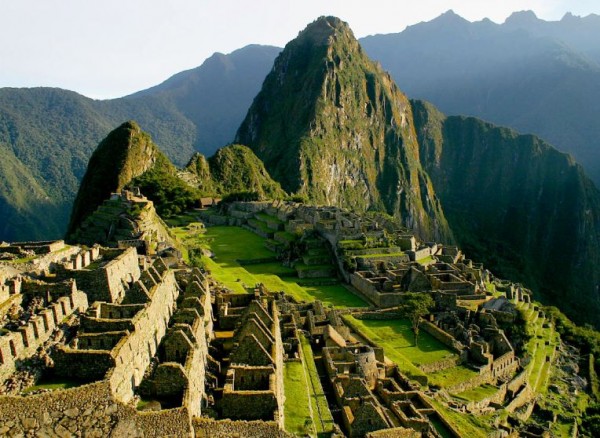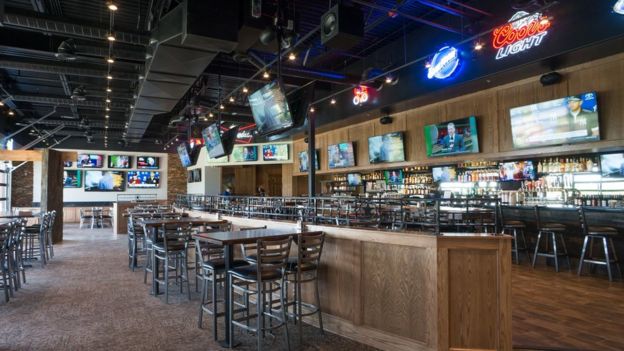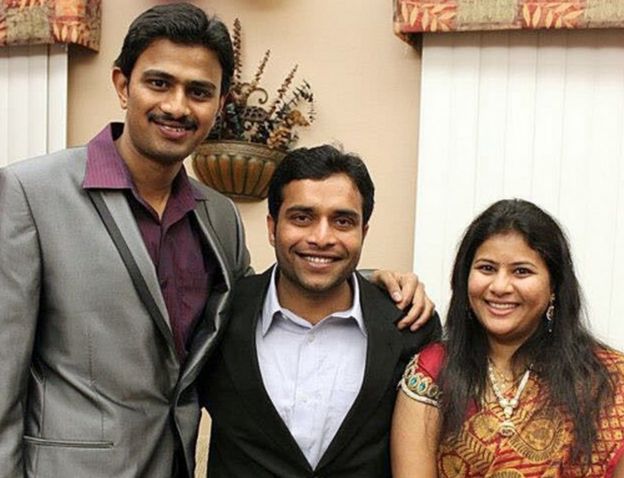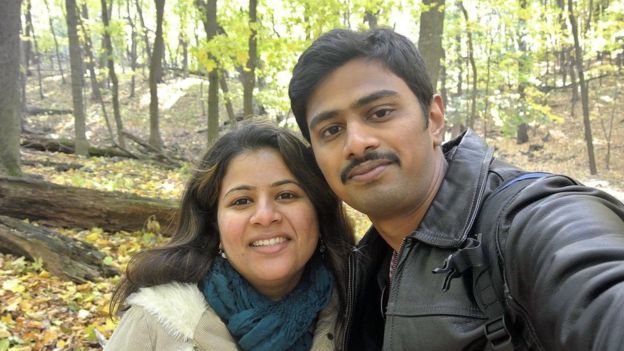Some time in the past, a family sat on
the top of the world and gazed at the stars. They lived on the Tibetan
Plateau, 4200m (14,100ft) above sea level, in a site now known as
Chusang. They called it home.
Although far from the comfort of
more lowly climes, this location had its perks. Fuelled by the tectonic
forces that raise and support the plateau, a hot spring at the surface
provided a welcoming buffer against the chilled air. At night, the
family lit fires in a hollow built into the slope, a lonely flicker
against the peak of darkness.
Their fire has long gone out, but
the family still left a lasting impression on the world. As they walked
and played, 19 hand and footprints were pressed into the clay-like mud
that seeped from the spring and, as they dried, were preserved into the
present.
Judging by the size of the prints -- and the hands and
feet that made them -- the family group contained six individuals, two
of which were children. But who were they? And what brought them to such
high altitudes? A foraging trip perhaps? Hunting? Or were they simply
curious, always searching for lands untouched?
Their marks leave
no answers to such questions. All that is known, as shown in a study
from January 2017, is that the Chusang prints were made between 12,700
and 7,400 years ago, making it one of the oldest archaeological sites
known on the Tibetan Plateau.
But what makes the Chusang family
special is their isolation. Living at the centre of the plateau, they
simply couldn’t migrate up and down the mountain with the seasons as
other Tibetan people did during this period. They were here year-round,
enduring the heavy snowfall, biting winds, and encroaching glaciers of
winter.
Their survival is extraordinary. While the heat of fire
could protect them from the cold, the family at Chusang couldn’t shelter
from an obvious yet insurmountable obstacle of living on the plateau:
the air becomes thinner with every step towards the sky. At more than
4,000m (13,000ft) above sea level, each breath contains around a third
less oxygen than the same breath far below. But deep inside each of
their bodies, within their blood and DNA, an ancient and unique trick to
surviving at altitude protected them from the thin air in which they
built their home.
Any mountain climber will be able to describe
the shortness of breath that normally comes with altitude. It’s not that
the air has a lower percentage of oxygen – it’s around 21% wherever you
stand in the world. But air pressure decreases the further you walk or
fly from the sea’s surface, allowing the gas molecules to spread out in
all directions, and a lung can only stretch so far to compensate.
There are ways to deal with this change in pressure, however. Over many hundreds of generations, people living on the Andean
altiplano
that extends from Peru into Bolivia, have evolved barrel-shaped chests
that increase the volume of each of their breaths. And since the late
1800s, scientists have known that their blood is pumped full of red
blood cells and haemoglobin, the oxygen-carrying molecules, that they
contain.
When the air is thin, the blood thickens to increase the
amount of oxygen it can shepherd to cells around the body. This
hematopoietic (literally, “blood” and “to make” in Greek) response is
also found in anyone who decides to hike up a mountain. “Compared at
altitude to Andean highlanders, we are pretty similar,” says Cynthia
Beall, an anthropologist from Case Western Reserve University in Ohio.
“Not completely, but the general response is the same.”
And since
virtually all research on high-altitude populations was focused in the
Andes, haematopoiesis was seen as a universal response to low oxygen
levels for nearly two centuries. It was only in the late 1970s and early
80s, after hiking to seven villages in Nepal, that Beall started to
find that Tibetans didn’t fit this theory.
Firstly, they lacked the barrel-shaped chests,
but seemed to breath at a faster rate than Andeans. And second, in the
autumn of 1981 Beall and her colleagues found that Tibetans have
surprisingly low haemoglobin levels, often within the range of what is
normal for people who live at sea level. Although they live on the
so-called “roof of the world”, their physiological state seemed
surprisingly similar to those who had never left its floor.
“At
first, this was anxiety inducing,” says Beall. “You think, ‘Oh gosh, did
I measure the wrong people? Did I do the wrong measurements? Is there
something I’m missing?’” But after returning to Tibet many times since,
collecting more data from more villages, she only found support for her
initial results: at high altitude, low-oxygen environments, Tibetan
people reduce the amount of oxygen their blood can carry.
How
could this be? What at first appears to be highly paradoxical – not to
mention potentially dangerous – actually makes a lot of sense,
protecting Tibetan people from some of the nastier side effects of the
high-life.
One benefit, for instance, is reduced wear and tear on
their blood vessels. “If you have high levels of haemoglobin your blood
tends to be more viscous, and that can have a lot of damaging effects,”
says Tatum Simonson from the University of California in San Diego.
“You’re basically pumping this very thick, concentrated blood throughout
your system. Your heart is on overdrive.”
A possible outcome of this added stress on the
entire circulatory system is chronic mountain sickness, or CMS. First
described in 1925 by the Peruvian doctor Carlos Monge Medrano, CMS (also
known as Monge’s disease) can afflict people who have lived happily at
high altitude for years. “It’s not clear what triggers the onset,” says
Beall. “But people become breathless, they become cyanotic [their lips
and extremities turn blue], they can’t work, they can’t sleep well –
they’re very ill.”
As with short-term altitude sickness, the
remedy for CMS is a slow descent into thicker, more oxygenated air. But
it is no cure. Fluid may have already built up in the lungs (a high
altitude pulmonary oedema, or Hape) or in the brain (a high altitude
cerebral oedema, or Hace), or the thick blood may be congested in other
vital organs. The worst-case scenario is death.
In the Peruvian
Andes, up to 18% of the population develop CMS at some point in their
lives. But on the Tibetan Plateau that number is rarely above 1%.
Welcome to The Human Planet
Humans are unique in their ability to adapt to their
environments - allowing us to build lives from the North Pole to the
Sahara Desert.
This article is the third part of
The Human Planet,
a new series in which BBC Future uses cutting-edge science to explore
our extraordinary diversity. If you enjoyed this, you may also like:
Certainly thin blood helps reduce CMS risk, but it’s certainly not
the only reason Tibetan people can live happily at such extremes. In
2005, for instance, Beall and her colleagues found that Tibetans exhale
more nitric oxide compared to people living in the Andes and at sea
level. Originally described as a relaxation factor, this gas leads to a
widening of blood vessels in the lung and around the body, known as
vasodilation. With more space, blood flow – and oxygen transport – can
increase.
And, as Simonson suggests, what if Tibetans simply don’t
require as much oxygen as other people? What if their muscles are just
more efficient with their usage, for instance? “Perhaps they are already
so well tuned that they don’t have that need, or mechanism, to make
more haemoglobin to bind more oxygen,” she says. Her work is now
exploring this possibility.
Although she has visited the Tibetan Plateau
several times for her research, Simonson surveys the history of this
region back in her laboratory. As a geneticist, she can scour the
genomes (the entire DNA sequence of an individual) of Tibetan people to
find what underlies their unique adaptations to the high life.
In
2010, by comparing the genomes of 90 Tibetan people to those from a Han
Chinese population living in Beijing, Simonson could identify those
genes that were associated with living at high-altitude. This is easier
than it sounds. Since the two populations are closely related but only
one has lived at altitude for thousands of years, any major differences
between the genomes are likely to underlie adaptations to this change in
environment, such as an atmosphere thin on oxygen.
Simonson’s lab
wasn’t the only one attempting this. In the space of two weeks in 2010,
a total of three research groups each published a study that found a
handful of genes that were markedly different between the two
populations. Of note, two genes called EPAS1 and EGLN1 stood out from
the crowd, and, importantly, were already known to modulate the
haemoglobin levels in blood.
“The really wonderful part was
everyone finding the same thing,” says Beall, who was involved in one of
the three studies. “In genomic studies, there are so many instances
where one study found an association [between a trait and a gene] and it
wasn’t possible to replicate it,” says Beall. “And in this case, right
off the bat, we had replication. It’s real.”
The field of human
genomics is made easier by the nature of our species as a whole: at the
level of DNA, of genomes, we are very similar. “On average, there aren’t
big differences between different populations,” says Rasmus Nielsen
from University of California in Berkeley. “The genetic variants that
are most different between different groups are variants that code for
things like hair colour and eye colour and skin colour.”
Our
differences are slight and are held at the surface. Under the skin, deep
in our DNA, we are nearly identical. From this sea of similarity,
important genetic changes between populations can be seen as small but
steep islands breaking the surface of the genome. But after looking more
closely at the EPAS1 gene from the Tibetan genomes, Nielsen not only
found it was a steep change, but it was a unique one too. After
searching through the aptly named 1,000 Genomes Project, he couldn’t
find anything quite like it elsewhere. “The DNA sequence that we saw in
Tibetans was simply too different,” Nielsen says.
It was as if Tibetans had inherited the gene from another species. And, in fact, that’s exactly what had happened.
Before its publication in 2010, Nielsen had
worked on the Neanderthal genome project with the doyen of ancient DNA
Svante Paabo, a geneticist from the Max Planck Institute for
Evolutionary Anthropology in Leipzig, Germany. He knew our species had
bred with these close evolutionary cousins, and scoured their DNA for
the source of the Tibetan-specific EPAS1 gene. No match.
Although
disappointing, it wasn’t all that surprising. Neanderthals are only
known to have mated with the ancestors of modern-day Europeans, leaving a
legacy of 1-5% Neanderthal DNA in their genomes. For people of Asian
ancestry Nielsen instead looked to Denisovans, another branch of the
human family tree.
Discovered in the Altai Mountains in Siberia,
they are known only from two teeth, a tiny finger bone, from which Paabo
and his colleagues published a rough genome in 2012. The results
demonstrated that populations from Papua New Guinea, Australia, and a
few regions of southeast Asia had inherited between 1-6% of their
genomes from Denisovans.
It was a case of third time lucky. “There
was a complete match,” he says. “It’s so hard to believe that it could
possibly be true. But it is.” Between 50,000 and 30,000 years ago, some
Denisovans and the ancient ancestors of Tibetan and Han Chinese people
had sex, merged their genomes, shuffled the genes like a deck of cards,
and produced children who would grow up to have offspring of their own.
Over
the next tens of thousands of years, this gene seems to have conferred
little benefit to Han Chinese people and is only found in roughly 1% of
the population today. But for all those intrepid groups that moved up
onto the Tibetan Plateau, including the Chusang family, it helped make
every breath easier, every heartbeat less dangerous. On the Tibetan
Plateau, 78% of the population has this version of EPAS1, a gene that
separates them from those far below, but connects them to the past.
Over
50,000 years in the making, this story still doesn’t have an ending.
Although its origin is known, those areas that make EPAS1 in Tibetans
unique are still largely unchartered. The specific change (or changes)
that leads to a reduction in haemoglobin content is still unknown. “All
the geneticists say it’s in an area that’s very hard to sequence,” says
Beall. The new explorers, those of mountains of data and genomes, still
have a long journey ahead of them.
--------------------------------------------------------------------









